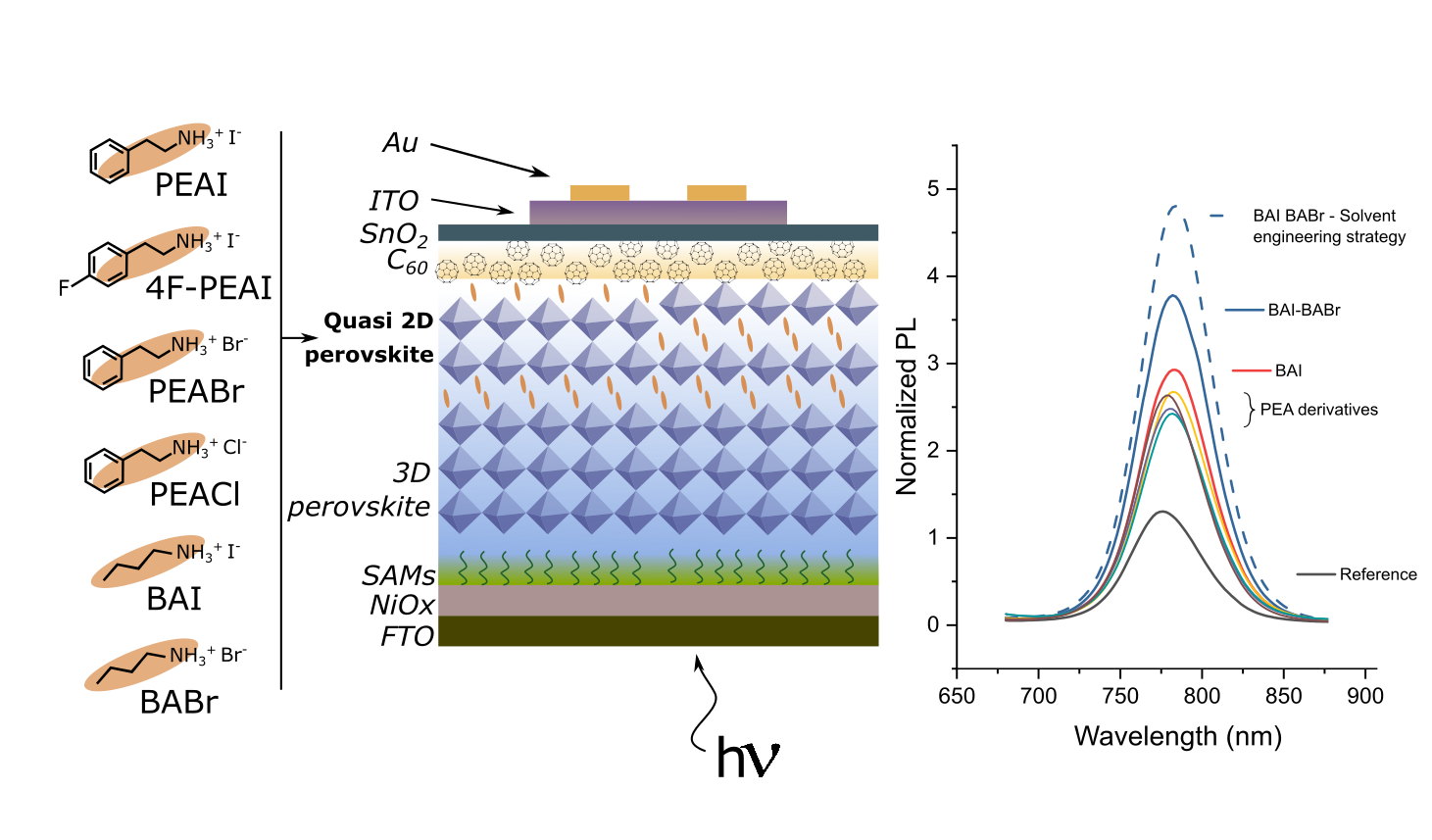
Perovskite solar cells (PSC) have emerged in the last decade as a new generation of photovoltaics, with a record efficiency of 26.1%, but limited stability. Recombination at interfaces having been identified as a bottleneck for both long term efficiency and stability, efficient passivation strategies are highly needed to get closer to commercialization. To this end, ammonium salts, that have the particularity to generate a 3D/quasi-2D interface when deposited on top of perovskite, have been integrated to all record efficiency n-i-p devices for the last 6 years (Teale et al, Nat. Energy 9, 2024).
Integration of ammonium cations in p-i-n solar cells holds great promise because of their passivation effect and quasi-2D perovskite higher intrinsic stability, but remain a challenge because of its high bandgap. As a result, properties such as orientation, thickness and, above all, dimensionality of the layer need to be controlled for integration in inversed architecture perovskite cells (Chen et al, Nat. Photon., 16, 2022).
The low dimensional layer is formed at the top surface of 3D perovskite through the spin coating of bulky ammonium cations on top of 3D perovskite. First, several promising ammonium cations were identified, namely phenethylammonium iodide (PEAI), bromide and chloride (PEABr, PEACl), 4-Fluoro-Phenethylammonium iodide (4F-PEAI) and butylammonium bromide and iodide (BABr, BAI). Solvent engineering strategies as well as the introduction of additives (MASCN, MAI, ethylene diamine) were studied to induce the recrystallization of perovskite top surface and control the properties of the quasi-2D perovskite (Liu et al, Adv. Energy Mat. 13, 2023; Huang et al, Energy Environ. Sci. 16, 2023). The quasi-2D layer was systematically characterized by SEM, KPFM, XRD and photoluminescence (PL), revealing major differences depending on the deposition strategy. Notably, solvent engineering strategies as well as the introduction of additives enabled to completely get rid of PbI2 within the perovskite layer, thanks to efficient grain-boundary passivation.
I-V results confirmed that beyond the choice of ammonium cations, the deposition strategy played a crucial role. We identified a mixture of ammonium cations and MASCN as the most promising strategy for enhanced efficiency and stability.
